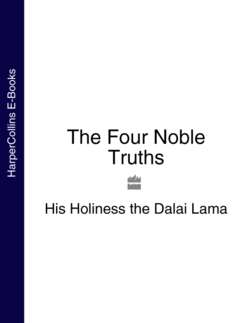Читать книгу The Four Noble Truths - Далай-лама XIV, Литагент HarperCollins USD, Дуглас Абрамс Арава - Страница 9
The Two Truths
ОглавлениеNow in order to develop a comprehensive understanding of the Four Noble Truths, I think it is also necessary to be familiar with the Two Truths, conventional or relative truth, and ultimate truth. Here you must keep in mind that I explain them from the perspective of the Madhyamaka or ‘Middle Way’ School of Buddhism. Of course, the concept of Two Truths is not confined to this school alone. You can find the concept of Two Truths in other Buddhist schools of thought, and also in some non-Buddhist Indian philosophies. Here, however, I take the Madhyamaka view.
So how can we develop a personal understanding of the fundamental Buddhist doctrine of the Two Truths? By coming to know our everyday world of lived experience, we appreciate what is known as samvaharasatya, the world of conventional reality, where the causal principle operates. If we accept the reality of this world as conventional, then we can accept the empty nature of this world which, according to Buddhism, is the ultimate truth, the paramarthasatya. The relationship between these two aspects of reality is important. The world of appearance is used not so much as a contrast or an opposite to the world of ultimate truth, but rather as the evidence, the very basis on which the ultimate nature of reality is established.
Only when you have an understanding of the nature and relationship of these Two Truths are you in a position to fully understand the meaning of the Four Noble Truths. And once you understand the Four Noble Truths, then you have a sound foundation on which to develop a good understanding of what is meant by Taking Refuge in the Three Jewels.
